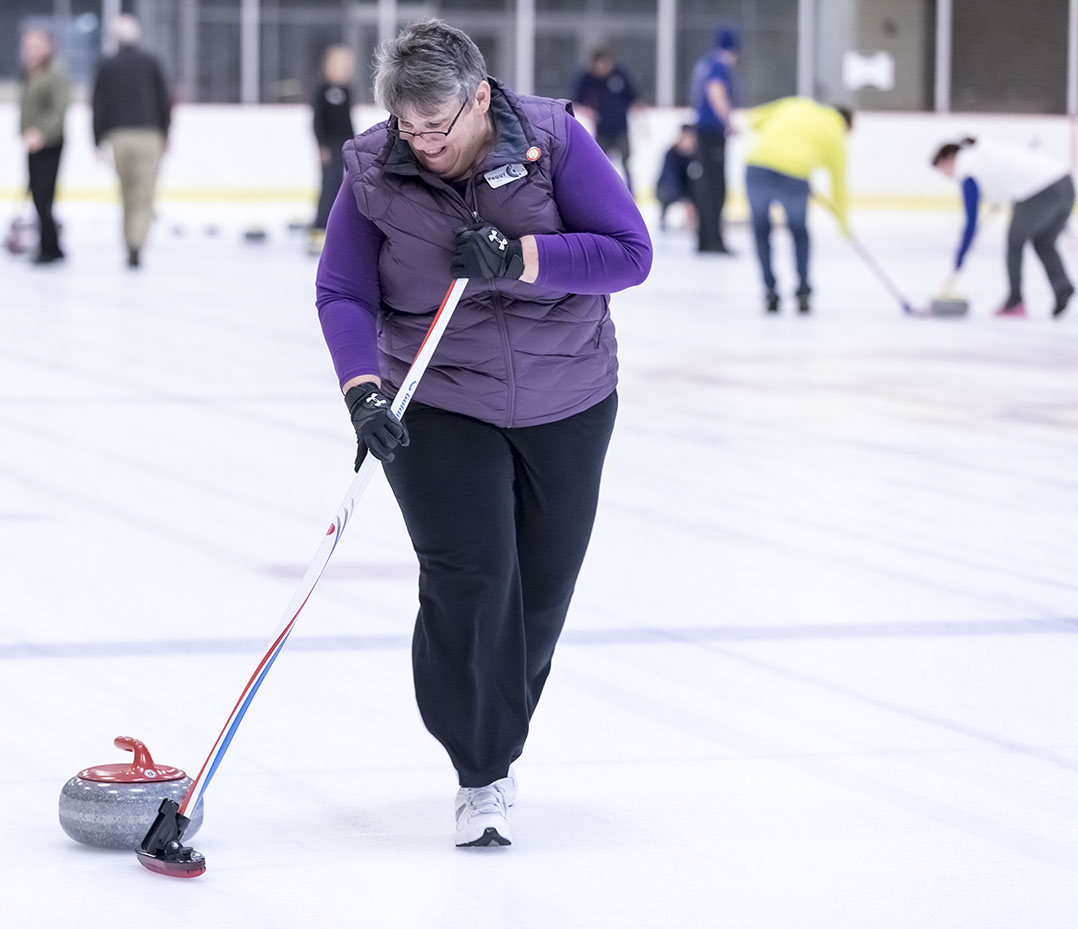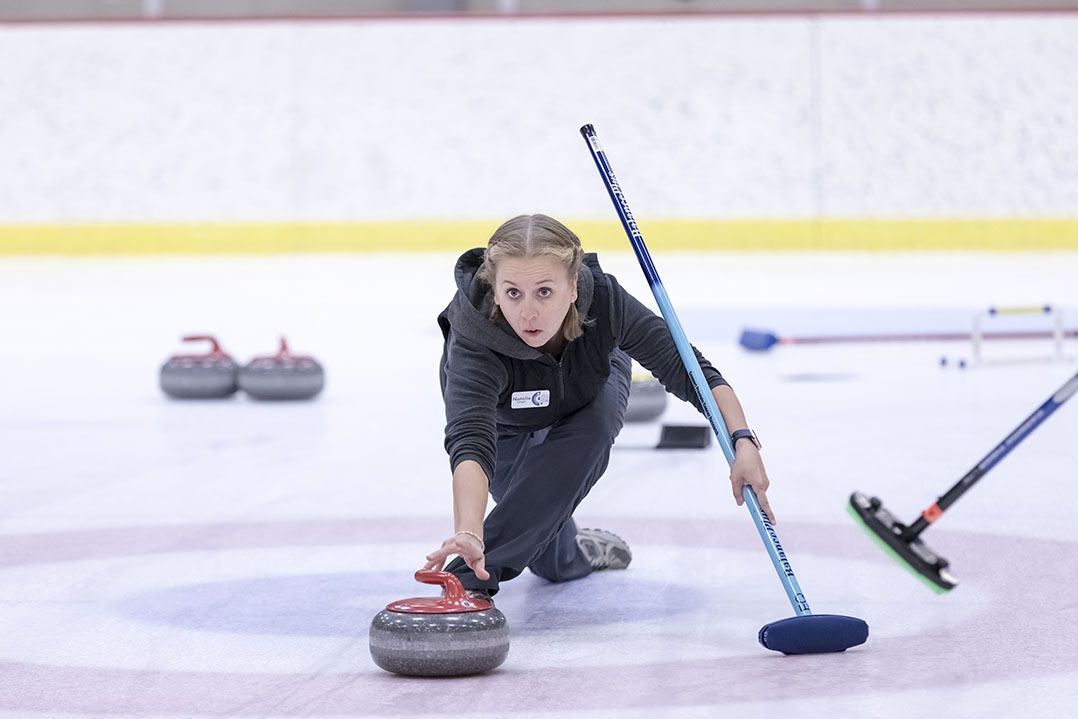Like many Americans, Lawrence resident Jeff Heck always looked forward to watching Curling during the Winter Olympics. After watching the ice sport during the Turin 2006 Winter Games, Heck said he was fascinated and called USA Curling to inquire about starting a club in Fishers.
“Back then, stones were $1,000 a piece, and you needed 16 of them to be able to field two teams,” Heck said.
“Also, you needed to find a place that would allow you to paint the houses into the ice and everything else that went with it.
“So, I said, ‘Thanks’ and went on with life.”

In 2007, Heck saw an ad promoting a learn-to-curl event at Pan Am Plaza in Indianapolis. He attended and became hooked. Circle City Curling was founded in 2007 by Butler University and the former Indiana World Skating Academy. Heck became president in 2008 and served in the role until 2010. Then, he was president again in 2013 and 2015. He also has been the club’s treasurer, vice president, league commissioner and been a board member.
Now, he’s simply an active member.
“We are a 501c3 nonprofit, and our mission is to promote and build the sport locally,” Heck said. “Right now, we rent ice time from the Fuel Tank in Fishers. Ice time is hard to come by, so we are only able to curl one night a week, which for us is Friday nights from 6:30 to 10:30 p.m.”
Because the Winter Games in Beijing start this month, Heck said the club has received a lot of attention and has had to adjust its Friday schedule.
“We have our league play for our membership from 6:30 to 8:30, then in the last two-hour slot we’ve been offering learn to curls, which are an introduction to the sport,” Heck said. “When you attend a (learn to curls event), you will get some-off ice instruction/history, followed by on-ice instruction and game play.
“We provide all the necessary equipment. Participants just need to dress for temps in the mid-40s and wear clean athletic shoes and flexible clothing.”
Heck said the club offers Fishers the opportunity to learn how to play an unfamiliar sport that is that also boosts the local economy.
“It offers local restaurants revenue because a big part of curling is something called ‘broomstacking,’” Heck said. “Basically, when we’re done playing, we go out for drinks and food at a local establishment. If we run two leagues in one night, that means 60 to 75 people spending money in the local community. Curling is a very, very social sport. It also offers the opportunity to bring national and regional curling events to town.”
Heck said he hopes the club can host Curling Night in America at some point.
“This is an event where major teams from around the world come to the U.S. and play for a week at a facility,” Heck said. “It’s usually done in the summer, filmed, then aired in the fall. The host city obviously would benefit from hotel stays, dining and the notoriety.”
Heck said the club’s players range in age from teenagers to players in their 80s. He said the sport is for everyone.
“If you have issues with your knees or just can’t bend down to deliver a stone, you can use a delivery stick,” Heck said. “You stand, walk forward, and push the stone, a lot like a shuffleboard delivery. We also have wheelchair delivery sticks as well. It’s open to everyone.”
Heck said the club’s main goal is to promote fun and possibly provide a club team an Olympic opportunity.
“Since we are a USA Curling member club, we are part of the Great Lakes Curling Association. Our members can assemble teams to play in regional USA Curling championships as well as national events,” Heck said. “If four men or women assembled a team, or a man and woman for mixed doubles, and won the right tournaments, you can get to the Olympic games from our club.”
The club also is a popular starting point for beginners.
Mark Einselen, a 34-year-old Carmel resident, started playing in October 2021 and said he’s enjoyed it ever since.
“Everyone at Circle City Curling Club has been very helpful as I learn how to curl,” Einselen said. “I get helpful tips on how to improve my technique every night. More experienced players are very patient with me. The club is intentional about making curling accessible to new members. There are a lot of peculiar curling rules, and they are very forgiving as I learn. The introductory ‘learn to curl clinic’ and subsequent mini-league gave me a low-pressure opportunity to gauge my interest and test my ability on the ice.”
Einselen said he likes that curling challenges his mind and body.
“I forget about other stressful stuff when I’m curling because it requires both mental focus and physical control,” Einselen said. “When I’m not throwing stones myself, I’m sweeping for my team members. This provides variety and keeps me actively participating in every part of the game. There’s a surprising amount of critical strategy in curling, and the challenge of figuring out the dynamic ice conditions ensures that I’m never a passive observer.”
Two years ago, Tyler George visited the Fishers club. George is a member of the USA men’s gold medal-winning 2018 Olympic curling team. He conducted a meet-and-greet with the public.
“It was such a great night. He brought the gold medal, posed for photos and chatted with those who came out,” Heck said.
Circle City Curling is working on opening a facility in Anderson where it will be able to curl seven days a week instead of only on Fridays.
“We found a space that is in our budget and will start construction and renovations soon,” Heck said. “It will be a three-sheet facility and will allow us to grow. We will not be locked into a particular night and time, meaning we can curl seven days a week, and hopefully we’ll grow the sport five times over. We’ll be able to offer high schools the opportunity to form teams and play, and also universities.
“We can offer corporate team-building events, and I’d love to get a wheelchair curling league going. The future is looking bright.”
For more, visit circlecitycurling.com.
How to play
A curling sheet is approximately 150 feet long and 15 feet wide. At each end large circles – or “houses” are painted on the ice. The goal is to get more of your colored stones in the house nearest the center of the rings than your opponent.
Each team has eight stones and four players. The positions on a team are lead, second, vice and skip. Each player throws two stones in an alternating manner.
After the stone is released, the skip reads the ice to see if the stone is on target and checks the speed. When the lead throws, the second and vice walk beside the stone and sweep in front of it, based on the reading of how the stone is sliding down the ice. The stones will curl, meaning move a certain direction. Players can make a stone go straighter by sweeping. Sweeping basically melts the ice in front of the stone a bit. When the stone comes to a stop, then the other team throw its first stone. The process continues until all stones are thrown and a score is tallied.






